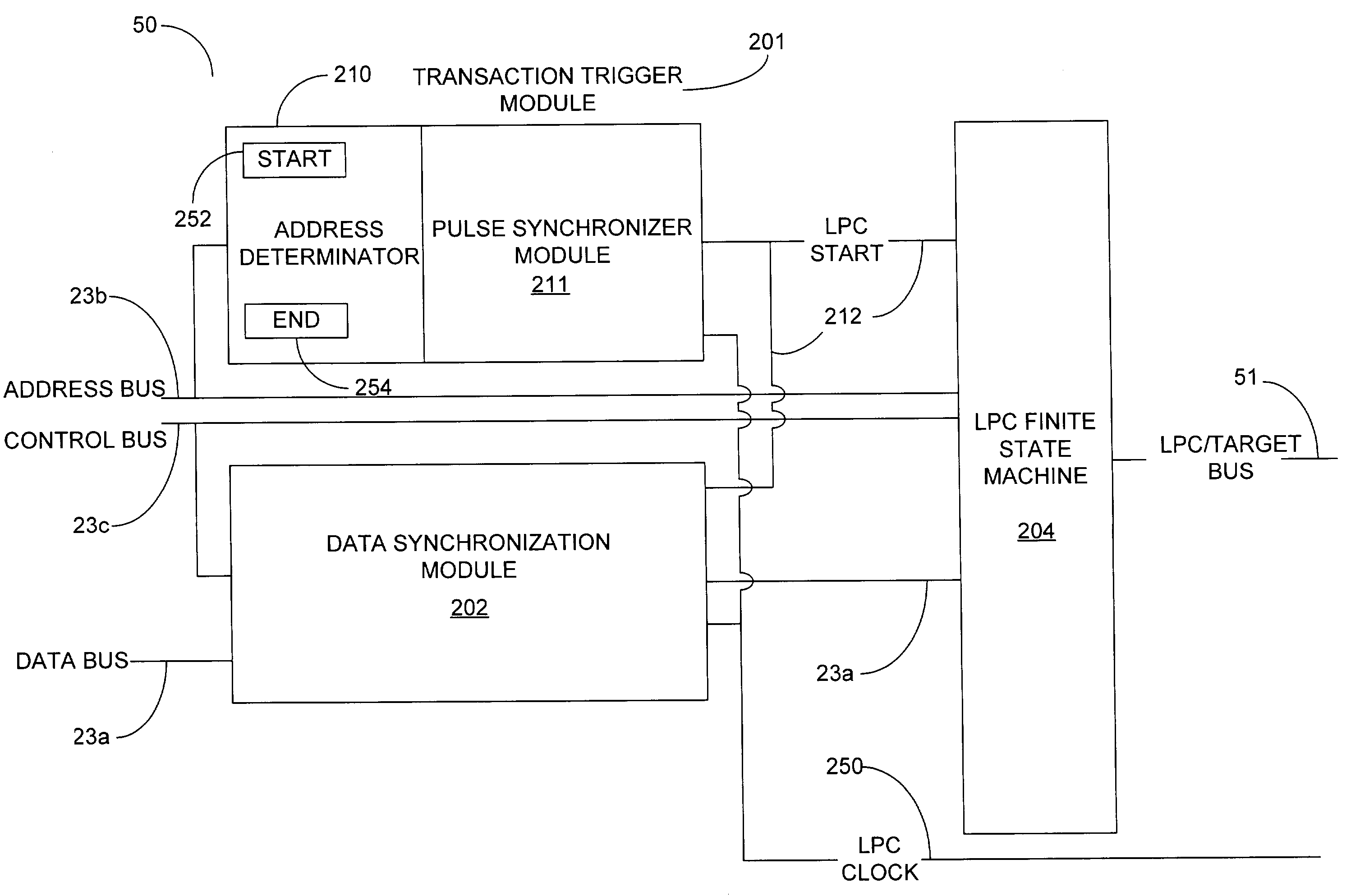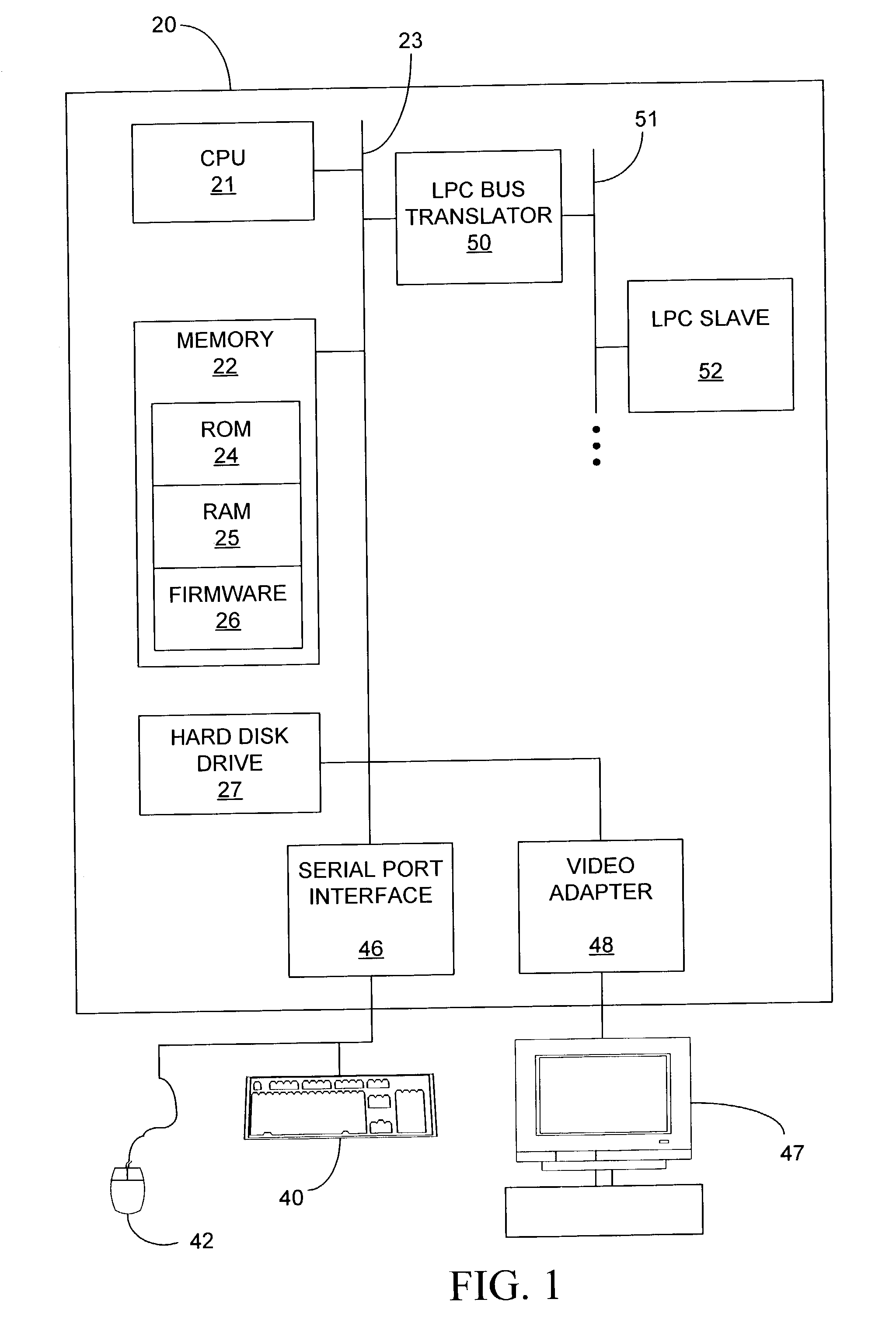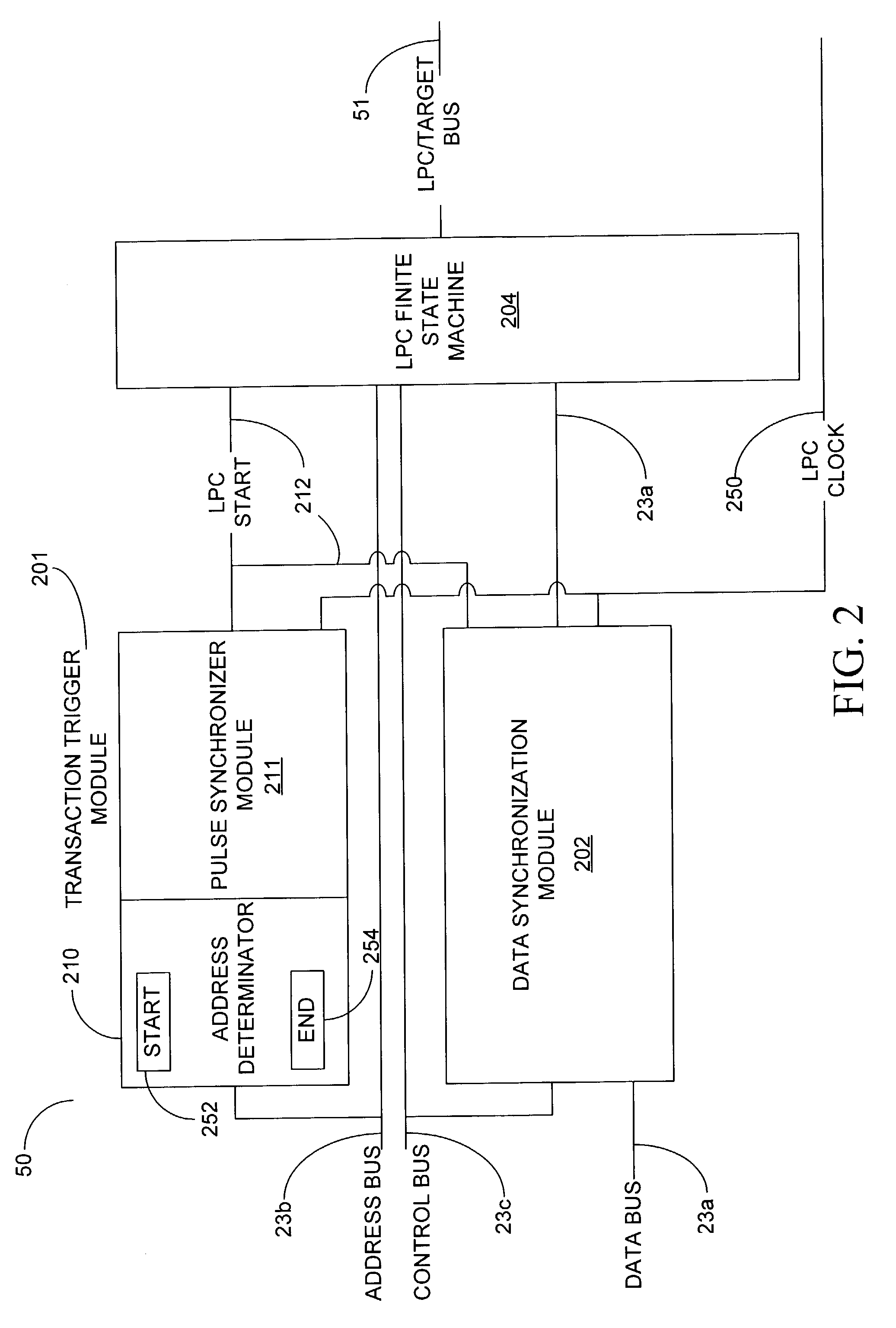Memory bus interface
- Summary
- Abstract
- Description
- Claims
- Application Information
AI Technical Summary
Benefits of technology
Problems solved by technology
Method used
Image
Examples
Embodiment Construction
[0010]Various embodiments of the present invention are directed to a device, system, method, and computer-readable medium for facilitating data communication between two different computer bus architectures. In one embodiment, communication between a register-based memory bus and an LPC bus is achieved. FIG. 1 and the following discussion are intended to provide a brief, general description of a suitable computing environment in which the embodiments of the invention may be implemented. Those skilled in the art will appreciate that the invention may be practiced with other computer system configurations, such as, for example, hand-held devices, networked PCs, minicomputers, mainframe computers, multiprocessor systems, microprocessor-based or programmable embedded computers, the like. The invention may also be practiced in distributed computing environments where tasks are performed by remote processing devices that are linked through a communication network.
[0011]FIG. 1 is a block d...
PUM
 Login to View More
Login to View More Abstract
Description
Claims
Application Information
 Login to View More
Login to View More - R&D
- Intellectual Property
- Life Sciences
- Materials
- Tech Scout
- Unparalleled Data Quality
- Higher Quality Content
- 60% Fewer Hallucinations
Browse by: Latest US Patents, China's latest patents, Technical Efficacy Thesaurus, Application Domain, Technology Topic, Popular Technical Reports.
© 2025 PatSnap. All rights reserved.Legal|Privacy policy|Modern Slavery Act Transparency Statement|Sitemap|About US| Contact US: help@patsnap.com



